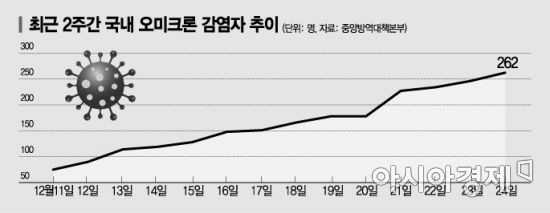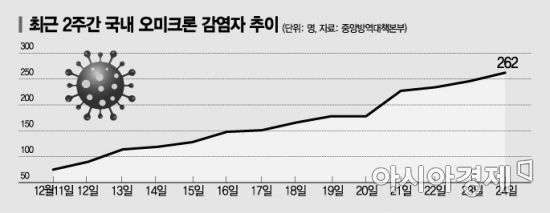Korea Centers for Disease Control and Prevention, analysis of 80 early infections
The strong protective effect is obvious… Emphasis on vaccination needs
Introducing the Omicron Rapid Diagnostic Toolkit from 30
“Discovered within 3 to 4 hours” … 5 major mutations detected in “universal polymerase chain reaction”
[아시아경제 이춘희 기자] There have been no severe cases or deaths among omicron COVID-19 mutant infections in Korea, and an analysis showed that about 60% had not been vaccinated. Amid the growing controversy over whether current vaccines can prevent Omicron, experts emphasized that although the vaccine’s effectiveness in preventing infections has been reduced due to mutations, the vaccine needs to be vaccinated because the severe protective effect is evident.
According to the 24th day of the Korean Medical Association, the Korea Centers for Disease Control and Prevention (KCDC), along with Korea Anam University Hospital, Seoul, Gyeonggi, and Incheon, analyzed 80 cases of localized omicron mutation from the 24th of last month to the 10th. From November 2021. The flux and prevalence of the Omicron mutation was recently published in the Journal of the Korean Medical Association (JKMS).
According to this paper, in which Park Yong Joon, head of the epidemiological investigation team at the Central Quarantine Countermeasures Headquarters, participated as a corresponding author, none of those infected became seriously ill or died of COVID-19. 27.5% (22 patients) had no related symptoms, and most of those infected had only mild symptoms. Symptoms were followed by sore throat (35.0%), cough (32.5%), fever (23.8%), and headache (23.8%).
The thesis stated the ‘toxicity-infectious compromise hypothesis’ for this trend, and indicated the possibility that the COVID-19 mutation would develop in a direction that spreads faster rather than reducing its toxicity. The ‘obstetric period (period of serial infection)’ for patients with omicron was 2.8 days, which was shorter than the mean of 2.9 to 6.3 days for the delta mutation, which had the highest transmission power. The obstetric period is the period of time during which an infected person causes additional infection, the shorter the period, the faster the virus spreads.
The researchers assessed that local infection among unvaccinated people also contributed to the rapid spread of omicron. Of the 80 people analyzed, 82.5% (66 people) developed local infection, and among the 78 people who were vaccinated, those who were not vaccinated were 60% (48 people). On the other hand, only 31.3% (25 patients) completed vaccination. The research team emphasized that “a significant community transmission occurred among unvaccinated people due to the introduction of the omicron mutation.
Even abroad, one by one, research results show that Omicron’s toxicity is low even though the transfer power is high. On the 22nd (local time), researchers at Imperial College London, UK, announced that even in the case of an omicron mutation, the need for hospitalization is 40 to 45 percent lower than that of a delta. In particular, vaccinated people have been found to have a lower risk of hospitalization than unvaccinated people even if they have an omicron mutation.
Meanwhile, the Korea Centers for Disease Control and Prevention (KCDC) announced that it has completed the development of gene amplification (PCR) for rapid confirmation of omicron mutations and will distribute them for use in every local government starting from the 30th. As a result, instead of genetic analysis that takes 3-5 days, it is now possible to confirm the presence of Omicron within 3-4 hours after confirmation. It can detect alpha, beta, gamma and delta as well as stealth microns. It is the first time in the world that five major mutations can be identified by a single polymerase chain reaction (PCR).
Reporter Lee Chun-hee [email protected]

Typical creator. Subtly charming web advocate. Infuriatingly humble beer aficionado.


